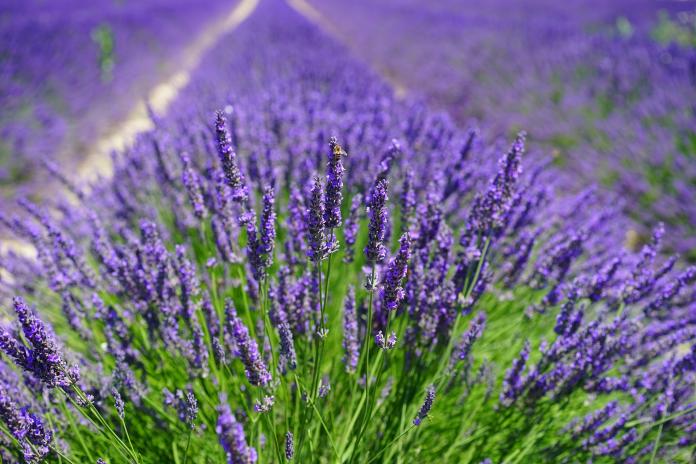In 2016, Central Government launched Aroma Mission to boost the cultivation of plants like lavender which have aromatic properties. The mission was launched in order to move from imported aromatic oils to homegrown varieties.
I am quite literally sure that the word “purple revolution” has probably gotten you to come to this article. Right? Of course! Till today, we have studied the green revolution, white revolution, pink revolution and many such revolutions, but never came across something called as purple revolution. Does an image of field filled with lavender pop up in your head, when you try to solve the mystery of what exactly can a purple revolution be associated with?
In 2016, the Centre launched Aroma Mission to boost the cultivation of plants like lavender which have aromatic medicinal properties. The mission was taken forward by the Council of Scientific and the Industrial Research (CSIR) and Indian Institute of Integrative Medicine, Jammu (IIIM). Around 500 farmers across villages in Doda, a district in Jammu had their incomes quadrupled after shifting their cultivation from maize to lavender and this shift is termed as purple revolution.
Shift from maize to lavender:
Farmers residing in the vast hilly slopes of Jammu and Kashmir’s Doda district gave up their age-old traditional farming of maize crops and successfully embraced the cultivation of aromatic lavender that is comparatively more profitable. This was the start of purple revolution in India.
It is being believed that growing lavender under the Union Government’s Aroma Mission to grow unconventional aromatic plants will also lead towards fulfilling Prime Minister Narendra Modi’s dream of “AtmaNirbhar Bharat”.The mission was launched in order to move from imported aromatic oils to homegrown varieties. The farmers of Doda shifted their agricultural practices from maize to lavender in order to increase their income.
Lavender, the native crop of Europe was introduced by the Indian Institute of Integrative Medicine in the temperate regions of the Jammu division under CSIR-Aroma Mission in 2018 and tried to popularise it in Doda, Kishtwar, and Rajouri districts as the cold climate of these regions were favourable for growing this perennial flowering plant.
The purple economy:
The shift of farmers from maize to lavender was quick and solely is based on the profit that the lavender cultivation or purple revolution offers. Apart from increasing farmer’s income, it has also increased the employment of women in the cultivation. Thus, it can be termed as a revolution. Lavender cultivation can increase the income of farmers as well as can also contribute to the national economy if grown on a larger scale.
Lavender oil sells for at least Rs. 10,000 per litre and that’s a huge amount. A minimum of 40 litre lavender oil is produced from lavender grown in one hectare of land.
Apart from growing lavender for oil, unlike many other seasonal crops, farmers can even dry lavender for multiple uses, like ornamental flower arrangements, sachets or potpourri, or can transform the dried flowers into value-added products such as essential oils, tinctures, soaps or lotions.
Since such cultivation is new to Indian agriculture, IIIM Jammu for now is helping the farmers to sell their produce in the market. Also, Mumbai-based companies like Ajmal Biotech Private Limited, Aditi International and Navnetri Gamika, manufacturers of aromatic products like candles, essential oils, etc are their primary buyers.
Women employment:
Apart from increasing the income of the farmers, lavender cultivation is also providing employment to the district’s women farmers. Since lavender can be cultivated in small land areas, therefore, most women in the areas suitable for lavender cultivation have started cultivating lavender around their homes. This not only helps them to invest less effort and give more time to their children but is also helping to become financially independent.
Phase II of Aroma Mission:
On February 9, 2021, CSIR-IIIM-Jammu announced Aroma Mission phase 2 after the success of the first phase. Impressed by the success of Doda’s lavender farmers, the inauguration event of mission’s phase 2 was attended by farmers from Uttarakhand, Nagaland and Assam. The mission now plans to increase lavender cultivation to 1,500 hectares within three years.
At present, large-scale lavender cultivation is limited to Jammu and Kashmir but governments in Himachal Pradesh, Arunachal Pradesh and Uttarakhand are also encouraging their farmers to take up lavender. Also, small-scale farming of the plant is already underway in these states.
The Aroma Mission is envisaged to bring transformative change in the aroma sector through invention in the areas of agriculture, for fuelling the growth of the aroma industry in India and rural employment.

